DotNext 2018 Piter Conference Program Overview
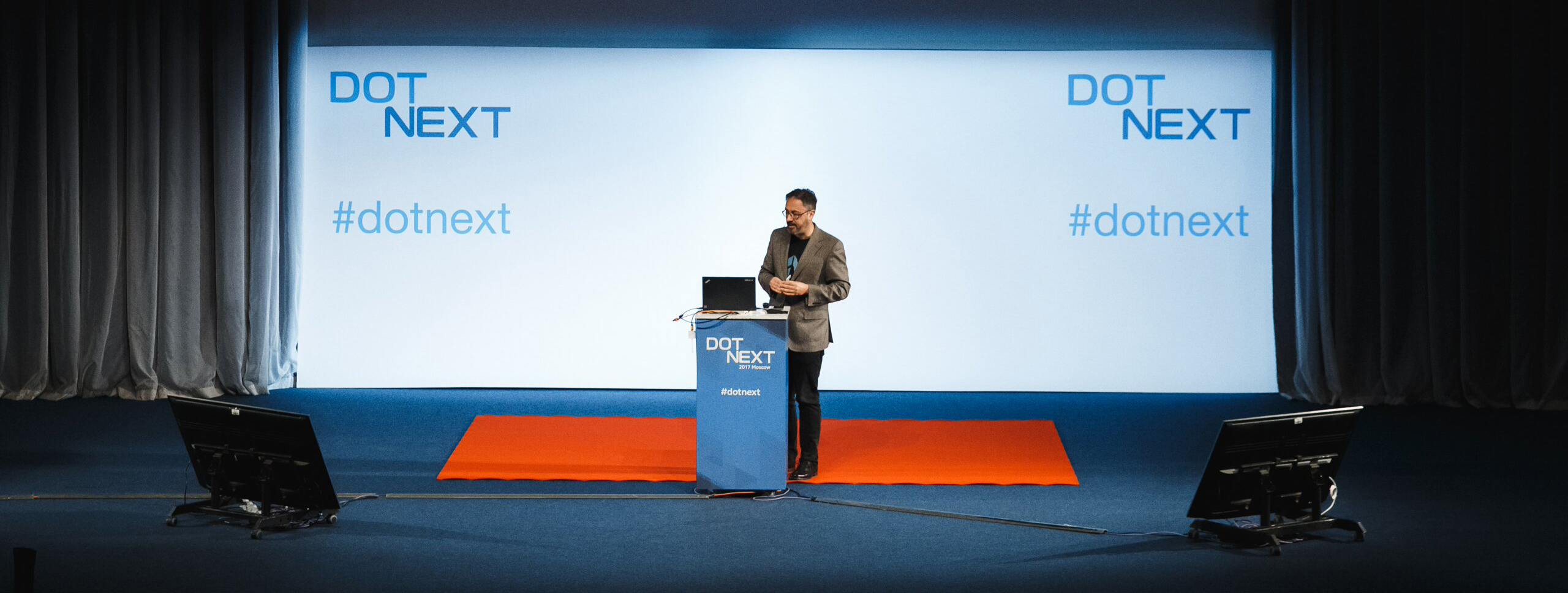
Conference : DotNext 2018 PiterJust a couple of days left until the next DotNext. A huge amount of work has been done on the program and the reports - we have previously written about this in the conference announcement and in a separate article .
Date : April 22-23, 2018
Location : St. Petersburg, Park Inn by Radisson Pulkovskaya Hotel
In this program, we have brought together the entire program in the form of one large list, with descriptions of reports and speakers. You can start thinking now which reports you should go to - you have to choose between three parallel tracks. In addition, there is still the opportunity to purchase tickets .
')
A detailed description of the program - under the cut.
The first day
Apps, algorithms and abstractions: decoding our digital world
Imagine a picture: you are traveling in a train, your smartphone makes a sound, you take it out of your pocket and see: a new message! This is a video with a cat falling from a chair! You answer "LOL", put the phone back in your pocket ... But do you think what it took to make it all work? Inside even the cheapest smartphone there are thousands of innovations, algorithms, inventions - but how do they work? How were they developed? What will the next generation of algorithms and applications look like?
In this report, we will be able to immerse ourselves in the technologies by which our ordinary household items work, and we unearth algorithms and abstractions that create our new digital world. We will look at everything: network addressing algorithms, frequencies in cellular networks, optimization of the shortest distance search, wavelet-compression, fingerprint recognition, media encoding methods, and so on. After this report, you will no longer be able to relate to your mobile phone as before.
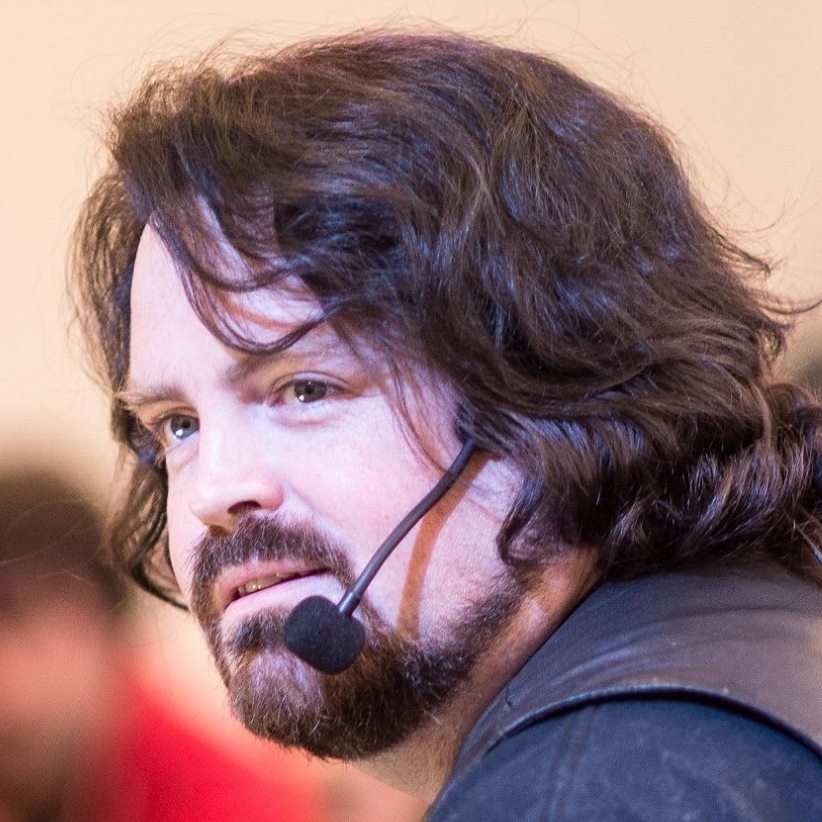 Dylan Beattie / Skills Matter
Dylan Beattie / Skills MatterDylan is a systems architect and developer who has been involved in many projects in his life, from small websites to huge distributed systems; from Legacy with a twenty-year history to the latest developments. He now works as an architect in Spotlight and is engaged in solving complex problems in modern distributed systems. In parallel with the main work, Dylan is actively involved in the community, is the organizer of the London .NET User Group and in 2016 participated in many conferences, including Oredev in Sweden, NDC in London, Sydney and Oslo, Tampere Goes Agile in Finland and BuildStuff in Lithuania and Ukraine .
Fastware
Optimization - that is, code acceleration - is one of the main ingredients of modern computing technologies. The speed of light is limited, so you can not overclock the frequency of the processors; On the other hand, matter consists of individual atoms, therefore it is impossible to make the schemes smaller than they are made now. So, for modern tasks such as self-managing machines or general artificial intelligence, methods of acceleration will have to be invented with our own brains.
This paper talks about two new examples at different ends of the spectrum of optimization techniques. The first technique is related to iron: you can replace brunches with calculations. Modern processors work much better with sequential code than with unpredictable brunches, we will exploit this fact. The second example will be about the classical algorithm, which can be improved using statistical data on the distribution and localization of data, and this improves its theoretical and practical performance.
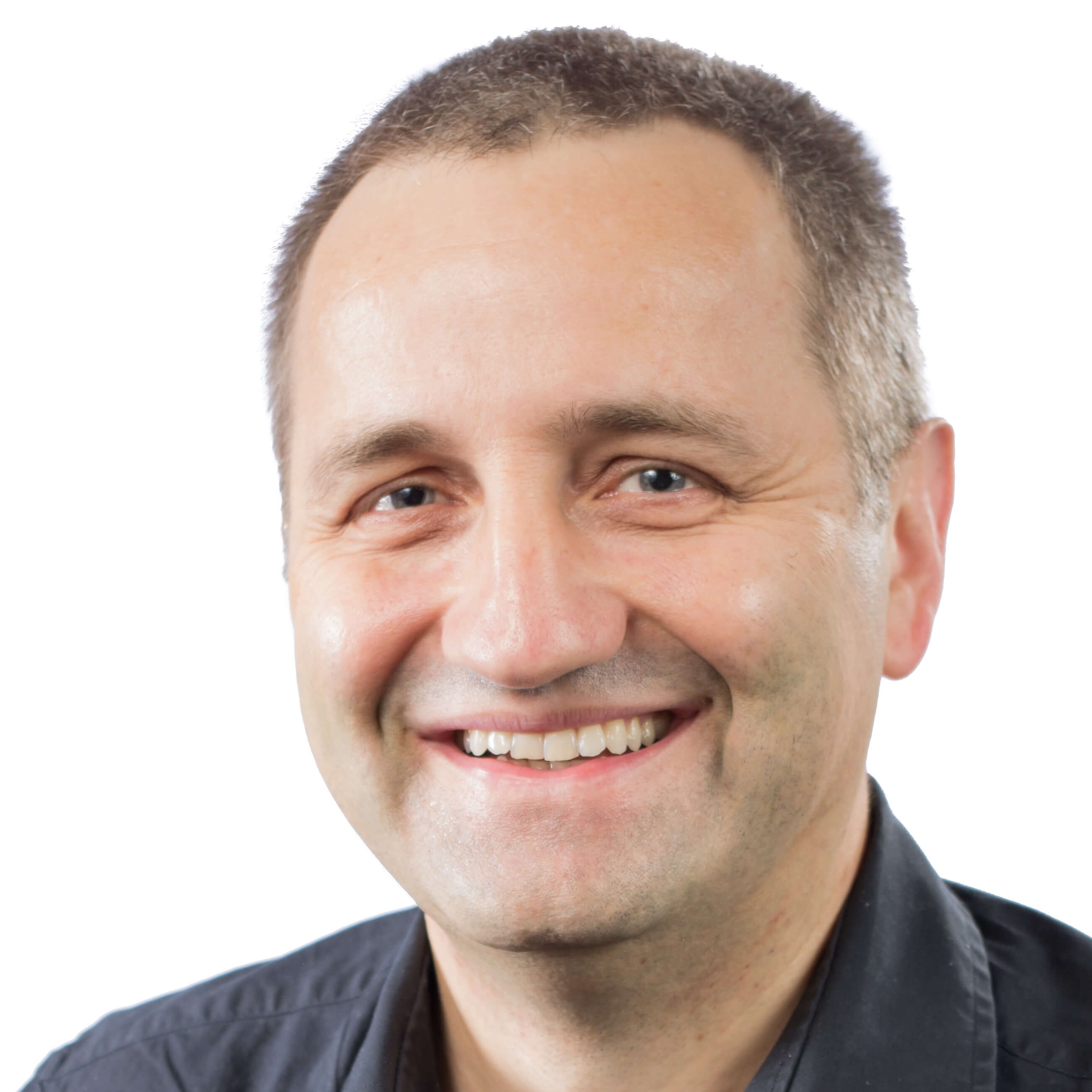 Andrei Alexandrescu / The D Language Foundation
Andrei Alexandrescu / The D Language FoundationAndrei Alexandrescu is an expert on a variety of things, including the design and implementation of software systems, the design of programming languages, libraries, all aspects of C ++ and D, machine learning and the processing of natural languages. His creative approach to solving problems, deep knowledge and charisma made Andrei Alexandrescu one of the most desirable speakers at conferences.
Books and articles by Andrey left their mark on the history of the industry. He is the author of such bestsellers as “Modern C ++ Design”, “C ++ Coding Standards” (in collaboration with the Coat of Arms Sutter), “The D Programming Language”, and also articles like “Simplify Your Exception-Safe Code - Forever” (in collaboration with Petru Marginean) and Mojo: Move of Joint Objects. Full list of articles is on the link .
Explore the Cosmos (DB) with .NET Core 2.0
CosmosDB is a NoSQL document-oriented database, making it possible to work in “real serverless” mode. It not only provides an easy way to connect geo-replication and guarantees low latency, but also allows you to choose the most convenient API with support for DocumentDB (SQL-like interface), MongoDB, Gremlin (graph), Table Storage and Cassandra. During the report, we will learn about installing, configuring and writing applications on .NET Core for CosmosDB. All this will happen with the use of live coding and live demonstrations.
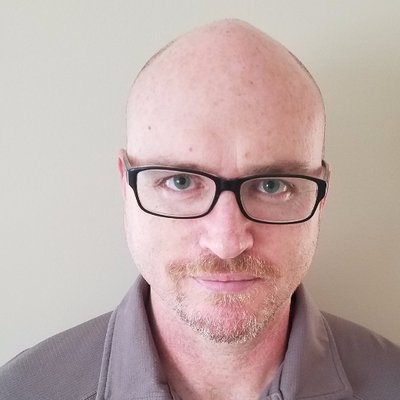 Jeremy Likness / Microsoft
Jeremy Likness / MicrosoftJeremy Lickness - Microsoft's Azure Cloud Developer Advocate. For two decades, Jeremy has been doing enterprise software with a focus on business applications for the web and has made hundreds of technical presentations. He has authored several good books, including Designing Silverlight Business Applications and Programming the Windows Runtime by Example.
Building SSO on the example of Identity Server 4.0 (.NET Core 2.0)
The report will tell you how easy and simple it is to build the Signle Sign-On infrastructure using a set of ready-made components. Let us examine the details of the work of the OAuth protocol and the various options for authentication protocols depending on the architectures used.
After the talk, you will know how to add SSO capabilities to your application using just a few lines of code.
 Vyacheslav Mikhailov / DataArt
Vyacheslav Mikhailov / DataArtVyacheslav is a solution architect in DataArt. Professional education in the field of software development, has been engaged in IT for 20 years. Basic experience in the financial industry and information security. Vyacheslav has extensive experience in the development and design of various applications, ranging from the iterative processing of outdated complex legacy systems to the design and development of modern scalable micro-service applications with minimal downtime.
How containers work
In modern HYIP trends, containers stand next to the blockchain and machine learning, but nevertheless, few people still understand them well. In this report, the containers are shown as they really are: normal processes, but with some amount of isolation, a quota for resources, and all this is sprinkled with sandboxing on top of security. You will understand why containers are so interesting and useful, how neimspaces isolate containers from each other, how to fumble resources between containers, how throttling works, how it all relates to .NET runtime and how to write a minimal .NET Core application that won't drag with an unnecessary 500 megabytes of user-space libraries and utilities from Ubuntu.
 Sasha Goldshtein / Sela Group
Sasha Goldshtein / Sela GroupSasha Goldstein - CTO at Sela Group, Regional Director and MVP at Microsoft, author of books at Pluralsight and O'Reilly, international consultant and trainer. Sasha is the author of the books Introducing Windows 7 for Developers (Microsoft Press, 2009) and Pro .NET Performance (Apress, 2012), a well-known blogger and contributor to OpenSource projects, the author of numerous training courses, including .NET Debugging,. NET Performance, Android Application Development, and Modern C ++. His work as a consultant is mainly related to distributed architectures, production debugging, performance diagnostics, and mobile application development.
Debug as a process
Debugging is the most interesting part of the development process, but this does not mean that we have to spend 90% of our working time on it. The report will tell about the rules of effective debugging. With real examples, we will see how adherence to the process helps to quickly find errors in the system. Also talk about proactive debugging and how to use it. We show how debugging can become part of the application architecture.
 Sergey Schegrikovich / dotmailer
Sergey Schegrikovich / dotmailerSergey is developing a globally distributed .NET application with a decade of history. He actively talks about the company's experience at international and local conferences. Helps colleagues with debugging and performance optimization, previously also implemented DevOps and SRE practices.
Bezshazhny pizzeria
How not to lose quality when moving from a monolithic architecture to a service one? How to help tests find bugs: write tests or still generate them?
The report will not be a “silver bullet” that would help you build your flexible team or else make the UI regress differently. We will focus mainly on the problem of effective tests using a property based approach. The examples show how to use FsCheck in conjunction with C #.
Surely you are faced with a situation where unit tests for methods were written, testers conducted regressions, and bugs appear as if from nowhere. The Dodo IS system development team is no exception. When the product is divided into semantic parts, the question of who will check the services that have appeared and how to deal with their integration has become acute.
Close cooperation of business, QA and developers, experiments with different approaches and practitioners, implementation of tests in CI is our way to quick feedback and improving the quality of the product delivered to customers.
Service without bugs - a pledge of delicious pizza ...
 Julia Kovaleva / Dodo Pizza
Julia Kovaleva / Dodo PizzaYulia graduated from the magistracy in LETI, having decided that her Altai fundamental education should be made more applied. After graduating, she has been working in the field of software testing for the 5th year and does not regret it. Perhaps the search for an incorrect solution or an incorrectly stated task condition is a skill that has been grafted since the days of school math battles. Julia managed to go from the analyst-tester with hard management, where the step is left-right and shooting, to an automator with the duties of a lead. She is not afraid of experiments, unfamiliar development languages and frameworks: the main thing is to do the work efficiently and help the team. Julia hopes that the April DotNext will delight all participants not only with interesting presentations, but also with its St. Petersburg spiritual atmosphere.
C # in the browser - myth or reality?
Every year the world is moving more and more from full-fledged installed applications in the direction of clients running in the browser to web services. With this transition, the requirements for the complexity of those continue to grow, which leads to the need to use languages with strong typing and rich syntactic possibilities.
Successfully occupying server, desktop and mobile development niches, C # now moves to the browser. The report will discuss the means of compiling C # in JavaScript, providing seamless integration with the existing web ecosystem, as well as the ability to run programs in a fully-fledged .NET-based environment using WebAssembly.
 Nikita Tsukanov / MandarinBank
Nikita Tsukanov / MandarinBankStarted in Navigator with development under WinCE / Mobile in C / C ++. Later on, he developed a VPN service with a cross-platform client on GTK #, the Promarket trading platform, Mono Maintainer for the Nokia N900, made tools for car chip tuning, a mobile messenger with End2End encryption, a payment system and a whole bunch of little things. He has extensive experience in the development of everything under the zoo technology, which I am glad to share.
Bot-Tender: a .NET chatbot walks into a bar
Chatbots are a new way to communicate and engage users, no matter who they are. Most likely, you already have a website, and maybe a mobile application, and the most serious friends also have a desktop application. But do you have a chatbot? Your users already have Slack, Skype, Facebook and many other places, why not give them the opportunity to communicate with your service directly, in a more “human” way?
In this report, you will get acquainted with the Microsoft Bot Framework and the Azure Bot Service and see how to build a waiter’s bot using them, breaking through all kinds of tasks arising from this. If you do not have a bot - it's time.
 Eran Stiller / CodeValue
Eran Stiller / CodeValueEran Stiller is an architect, consultant, instructor and just a person interested in new technologies. After many years of work, he became known as Microsoft MVP by Microsoft Azure for contributing to technical communities around the world.
As a co-founder of CodeValue Ltd., he practices various architectural approaches from day to day for different clients, works with all sorts of design options in various professional fields. Being a CTO, he is responsible for learning and promoting technologies and platforms in CodeValue projects and solutions.
He also leads training courses and workshops, often speaks at local and global conferences and meetings, and even is the founder of Azure Israel - the largest meeting on Azure in Israel.
Distributed transactions are dead, long live distributed transactions!
As “we all know,” distributed transactions died with the advent of the Internet era. Books on MTS, MSDTC, J2EE gather dust in museums while programmers write cloud services in the fight against eventual consistent data repositories like Cassandra and Mongo. For financial transactions, immortal SQL remains.
The team working on the Orleans framework is no stranger to questioning generally accepted "truths." She has already shown that, if properly applied, distributed objects can be successfully used to build efficient scalable applications, offering a convincing alternative to the Erlang / Akka approach to the model of actors.
Support for scalable distributed transactions is one of the latest Orleans innovations, refuting popular misconceptions. Sergey Bykov will talk about it, as well as other advanced functions of the framework.
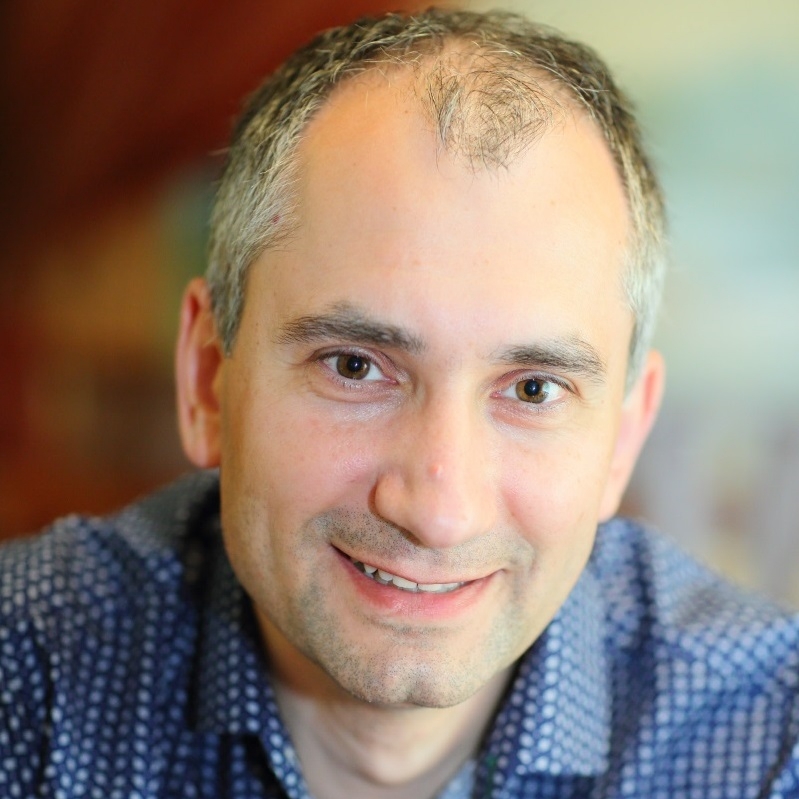 Sergey Bykov / Microsoft
Sergey Bykov / MicrosoftSergey Bykov started the Orleans project at Microsoft Research and continues to lead its development in open source in the Xbox division. Prior to joining Research, Sergey worked in various Microsoft groups, from BizTalk and Host Integration Server to embedded operating systems for POS and Bing. The depressing situation with development tools for cloud services and distributed systems prompted him to take up the Orleans project in order to qualitatively increase the productivity of programmers in this area.
Lightweight microservice collaboration using HTTP
Using microservice architecture, you break functionality into many-many narrowly focused microservices. Most of the functionality depends on how they interact with each other. In this report, we will see many ways of interaction between microservices, compare them with each other, understand which service to use and how to do all this in the simplest way. In addition, we will learn how to use HTTP for various types of interactions, and how to use Nancy to implement them on top of ASP.NET Core.
 Christian Horsdal / Horsdal Consult
Christian Horsdal / Horsdal ConsultChristian Horsdal is an independent consultant with many years of experience in the development of distributed systems on .NET. He is a committer at Nancy, Microsoft MVP and the author of Instant Nancy Web Development and Microservices in .NET Core.
Using AOT compilation correctly
Ahead-of-time compilation is the main topic of conversation.
Talk about the advantages and disadvantages of AOT, how AOT differs from JIT, AOT and Ngen, AOT for Mono and CoreRT, and how and when AOT should be applied.
 Elizaveta Golenok / MTS IT
Elizaveta Golenok / MTS ITElizaveta is a leading developer at MTS Information Technologies.
He has experience in developing and designing systems both in C / C ++ and C # ASP.NET, Mono (from navigation systems to enterprise solutions).
His areas of interest are route planning and multi-agent systems, compilation, LLVM, Clang, low-level application debugging, P / Invoke, and Mono.
Write your own C # static code analysis tool to drive business rules
So, you wrote a bunch of code and spent half a year on learning, understanding and improving it over and over. The code is something living, and there is no documentation better than the code itself. Therefore, we are starting to use a bunch of tools that allow us to manually check the code and fully understand what is happening with objects of a certain type, which parts of the code really need dependencies or which APIs are used in which parts of the code base. This is the more complicated the more code came to us from third-party developers.
The Roslyn platform gives us the opportunity to write tools to understand the source in terms of business rules, extract information from them that is sufficient to identify patterns of use and to apply security practices.
The idea is to improve the quality of code analysis tools, independently creating such tools and analyzers for Visual Studio, which will take into account the features of the developed product.
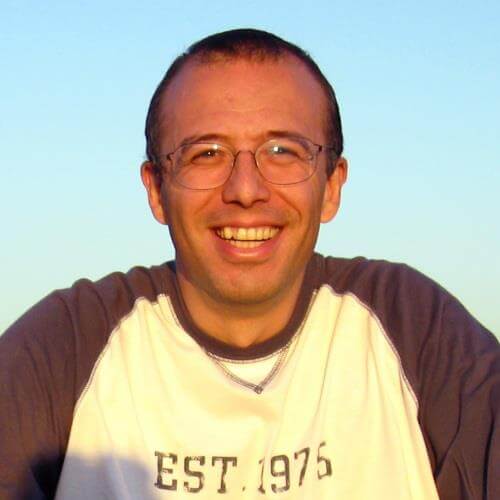 Raffaele Rialdi / Vevy Europe
Raffaele Rialdi / Vevy EuropeRaffaele Rialdi - Senior Software Architect, working including as a consultant, speaker and trainer. Since 2003, he has been a Microsoft MVP in the Developer Security category. His passion for community affairs made him a member of the UGIdotNET board, president of DotNetLiguria and co-founder of the Italian C ++ User Group. He is currently working as an architect and developer of enterprise application backends with a special focus on generating application sources in the field of cross-platform mobile and IoT development, in C # and C ++.
What is going on? Application diagnostics using the cloud
We all like to write and deploy applications. But what happens when all this is done? How do we know that the application works as we like? Of course, logging! But how will we delve into the results of diagnostics, which looks about equally useless? How can we find matches in the logs with events in the code, such as uncaught exceptions or some specific user actions? How can we make sure that we are not sending too much data? And so on and so forth. In this report, we will see how to deal with the diagnosis of a .NET application — using structural logging and Azure Application Insights in order to produce more meaningful data.
 Maarten Balliauw / JetBrains
Maarten Balliauw / JetBrainsMaarten Balliauw loves making apps for the web and the clouds. His main interests include ASP.NET MVC, C #, Microsoft Azure, PHP, and application performance. He is a co-founder of MyGet and runs the Developer Advocate in JetBrains. He is an ASP Insider and former MVP in the Azure category. Maarten often speaks at various local and international conferences, organizes the Azure User Group in Belgium.
Multithreaded data structures in .NET: how does it work?
The report will discuss the algorithms behind the collections in System.Collections.Concurrent. Step by step, with examples we explain complex algorithms. Also consider the design API multithreaded collection.
Important: to understand the report, you need to know the basics of parallel programming, including Monitors, Semaphores, read-write locks, atomic operations (Interlocked), etc.
 Dmitry Ivanov / JetBrains
Dmitry Ivanov / JetBrainsTechLid JetBrains Rider, developer of the core ReSharper: data structures, caches, multithreading. At JetBrains since 2011, he has previously led the development of server solutions at Yota. He graduated from mathematics SPbSU in 2006. Regular speaker DotNext.
Second day
12-factor apps in .NET Core
You, probably, already heard about Cloud Native: about continuous deployment and simple scaling of a server code. You heard about Docker and microservices. But what are the “12-factor applications” mentioned in the title? This methodology, originally developed by engineers who deployed to Heroku, is a “recipe for success” when writing code for any cloud platform. This report describes the essence of the method and demonstrates how to write an application for .NET that would meet all the requirements of this method. Absolutely there will be live examples using ASP.NET Core, the light and dark sides of applications built in this way are outlined; It will show how this can be deployed without a server, and using Azure Service Fabric.
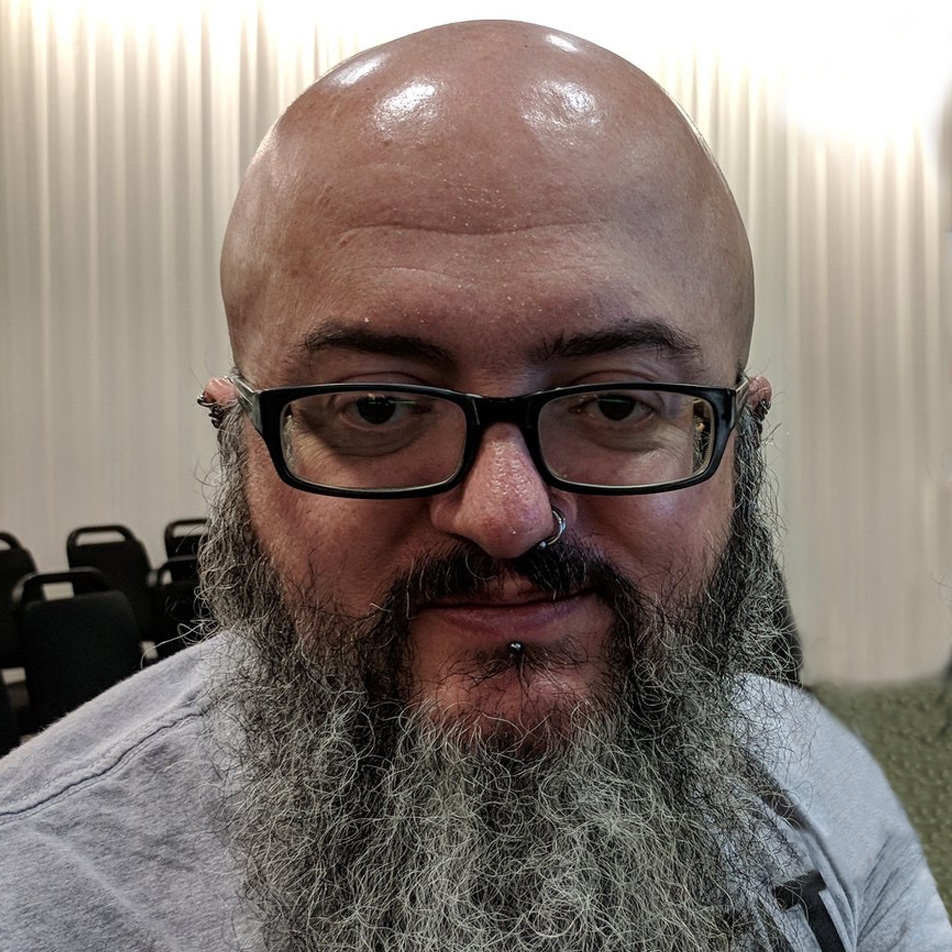 Ian Cooper / Huddle
Ian Cooper / HuddlePolyglot Coding Architect, based in London, co-founder of #ldnug, speaks at conferences. He has been developing for more than 20 years, and talks about patterns and practices on reports, trying to focus on architectural issues.
Expression trees in enterprise development
For most developers, the use of expression tree is limited to lambda expressions in LINQ. Often, we don’t attach any importance to how the technology works under the hood.
The purpose of the report is to demonstrate advanced techniques of working with expression trees:
- elimination of code duplication in LINQ;
- metaprogramming;
- code generation;
- transpilation;
- test automation.
After the talk, you will know how to use expression tree directly, which pitfalls the technology has prepared and how to get around them.
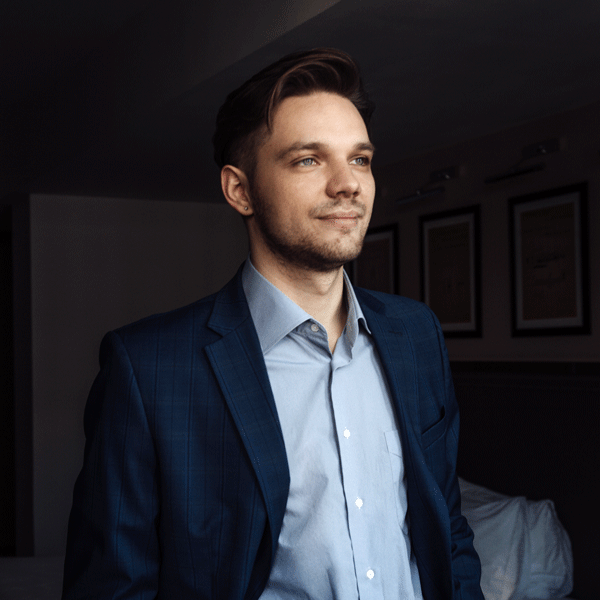 Maxim Arshinov / Hightech Group
Maxim Arshinov / Hightech GroupCo-founder of Kazan outsourcing company "Hightech Group". In addition to doing business, he teaches at the Graduate School of Information Technologies and Information Systems of Kazan Federal University and maintains a blog on Habré . For the query "How to write tests" in Google, the first result will be his article .
The total experience in programming and development management - 10 years. During this time, he has gone from a programmer in a Kazan web studio to the head of the quality department in the financial industry. He worked in organizations from Kazan, Moscow, St. Petersburg and Antwerp (Belgium).
He believes that technology is not a “thing in itself”, but tools for achieving goals. Each - with its scope.
Programming quantum computers in .NET using Microsoft Q #
Quantum computers are a very popular topic right now. Despite the fact that they continue to be mainly a topic for research and are limited to toy examples, we have a clear understanding of the future. To help develop and understand quantum protocols, quantum algorithms, quantum error correction, and quantum devices, Quantum Architectures and Computation Group (QuArC) developed a new language, Q #. Q # extends the .NET Framework with special implementations and structures that ultimately allow you to emulate a quantum computer as a virtual processor.
 Rolf Huisman / Info Support
Rolf Huisman / Info SupportRolf is working on Info Support as an application lifecycle management (ALM), DevOps, and Continuous Delivery (CD) consultant. He focuses on Microsoft technologies (for example, Visual Studio, TFS, Release Management, Azure, Azure Stack, MTM), which allow to improve and speed up the development and delivery process. MVP in the category of Visual Studio and Development Technologies. In addition, his interests include electronics, security systems and computational mathematics.
Finding your service boundaries - a practical guide
Quite popular to separate complex systems. We have already seen the specific benefits of modular deployment of microservices. Development focused on one small area of the code, unloads the brain. But how do we understand where to draw the boundaries of services? In complex subject areas, it is often quite difficult to even figure out where to start. If we draw boundaries incorrectly, a countdown will start: one day the time will come when it becomes “easier to rewrite everything”.
In this report, Adam will provide a series of practical tips on how to properly identify hidden system boundaries. Adam built complex systems twenty years in a row, and he had a lot of opportunities to go through all sorts of rakes. We will learn how to bypass such a rake that would eventually lead to a complete rewriting of the system.
 Adam Ralph / Particular Software
Adam Ralph / Particular SoftwareAdam is interested in distributed systems and works for Particular Software, where NServiceBus was made. He likes to make reports, support open-source projects and replace tabs with spaces.
HTTP / 2 microservice communication
HTTP / 2 not only accelerates the loading of web pages, but also optimizes the interaction of microservices in a distributed system. Our infrastructure team used HTTP / 2 in a new service and faced interesting problems. You will find an exciting fail story about performance, magic constants and unmanaged memory leaks.
The purpose of the report is to share the experience of using HTTP / 2 to optimize inter-service interaction in the .NET framework and Windows.
The report will be interesting to fans of detective stories about performance; microservice developers under .NET; people who are engaged in load testing HTTP-services.
Keywords: .NET, C #, HTTP / 2, WinDbg, microservice architecture, long polling, load testing.
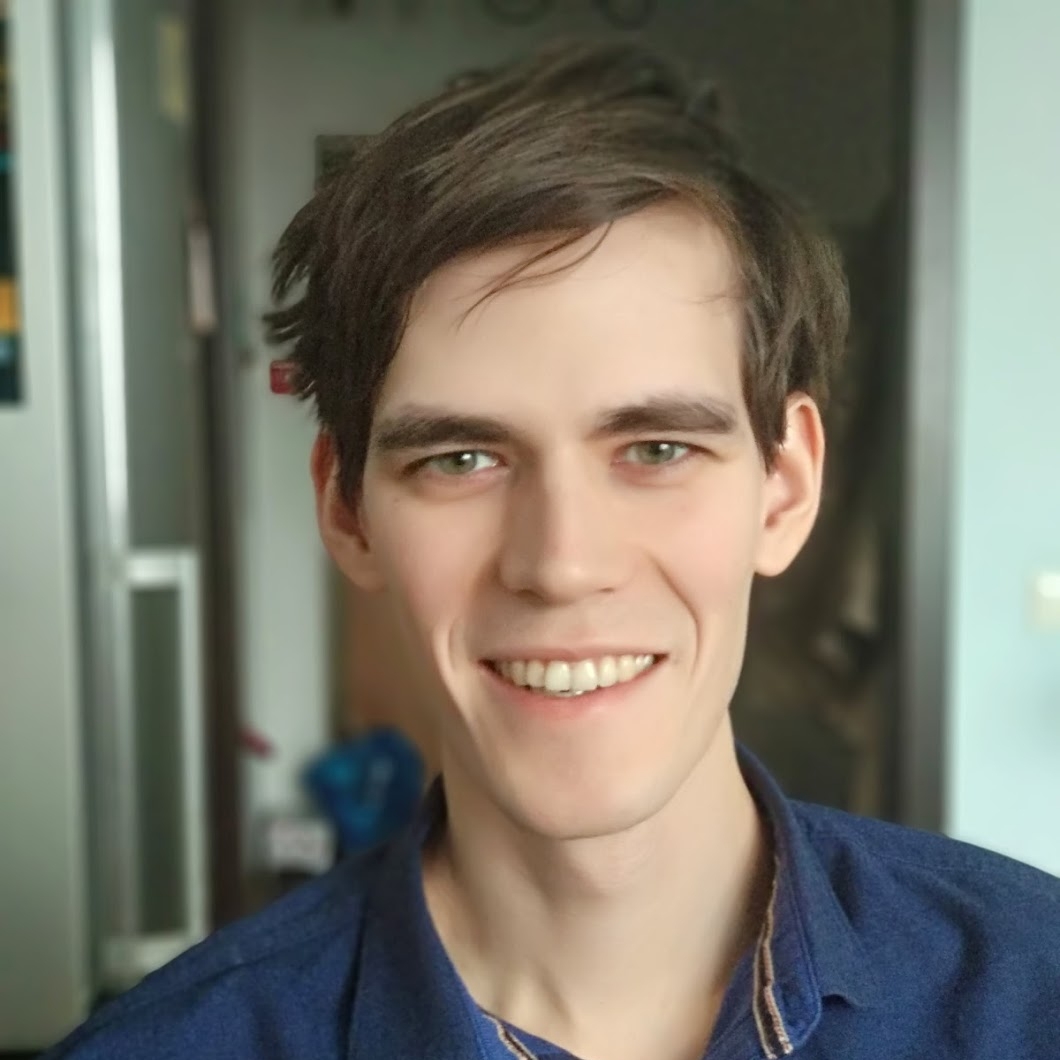 Yevgeny Zhirov / Contour
Yevgeny Zhirov / ContourC # developer in SKB Kontur infrastructure team. It is engaged in the development and support of shared libraries, distributed trace systems, and other high-performance services.
He is interested in creating reliable and scalable HTTP services, writing productive code, C # and .NET, robotics and IoT. Eugene likes to share knowledge with others, so he pumps public speaking skills and teaches several courses for students in UrFU.
Pitfalls of high-level cryptography
This report is a continuation of previous speeches on DotNext, which dealt with the problems of low-level cryptographic APIs in .NET and told about high-level cryptography. The story is not over yet! High-level cryptography itself has many features. The most advanced part of the report will deal with working with public keys.
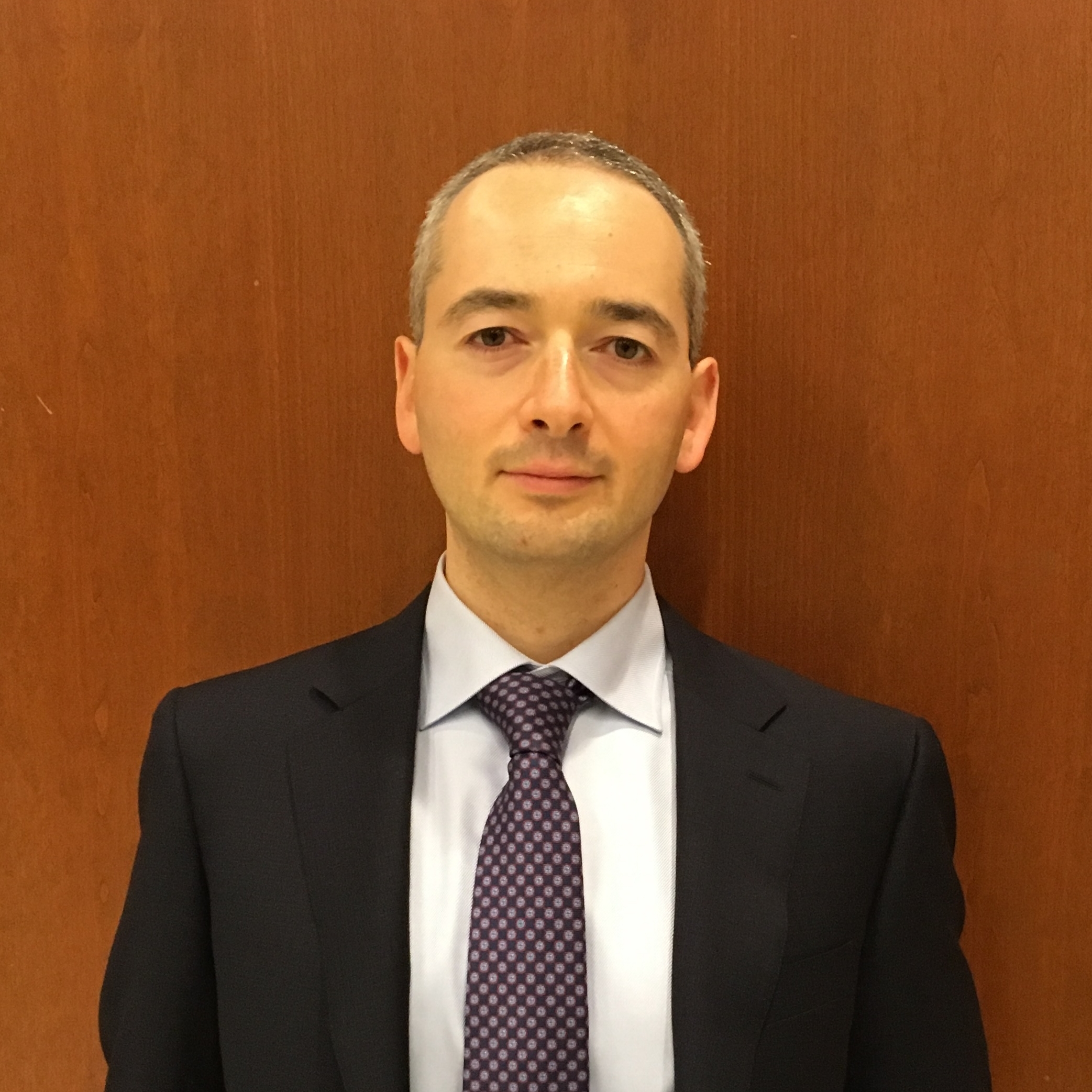 Stan drapkin
Stan drapkinStan Drapkin is a technical leader, manager and expert in security and compliance. He is engaged in hiring, training, and leading the best engineering teams that use .NET to develop highly secure cloud solutions for highly regulated environments.
Stan has a degree in Computer Science and an MBA, and he has been developing for more than 16 years using the .NET Framework. He did this in the days of .NET 1.0-beta in 2001, when he worked at Microsoft, and has since remained immersed in this technology.
Advanced .NET debugging techniques from a real world investigation
You know how painful it is: here you are releasing a new version, and the service began to behave very strange, and there is no one else to fix it. But where and how to start?
Criteo serves 150 billion requests per day, scattered across 4,000 front-end servers. As part of the performance team at Criteo, the speakers are very well versed in how to investigate critical issues in this kind of environments.
In this report, we will consider insights, mistakes, false traces that happen in reality.
We will go through all phases of researching the problem, starting from early detection and right up to fixing the problem, and all the techniques used will be described in detail. Including but not limited to:
- Using metrics to detect errors;
- What we can or cannot get from the profiler, on the basis of which you can make good assumptions;
- Dive into CLR data structures using a decompiler, WinDBG, and SOS to test assumptions;
- Automatic analysis of memory dumps using ClrMD, and how to write your own tools when WinDBG fails.
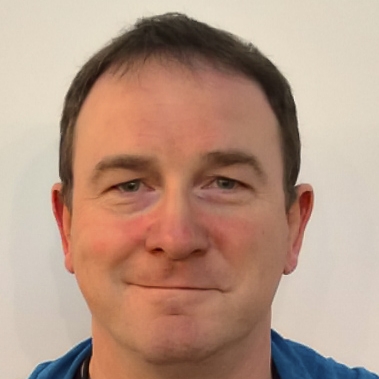 Christophe Nasarre / Criteo
Christophe Nasarre / CriteoChristophe Nasarre, 25+ years old, has been working on developing and supplying software for the Microsoft stack, has been a technical editor at MSPress, Addison-Wesley and other publishing houses since 1996, participating in writing books like CLR via C # and the latest edition of Windows Internals .
He usually talks about tools and useful ideas about .NET and Windows and keeps a blog . He has experience of reports both inside Microsoft and at public events like Microsoft TechDays.
 Kevin Gosse / Criteo
Kevin Gosse / CriteoKevin Gosse has been using Microsoft .NET technology for 10 years; he has been developing servers, clients, and mobile applications. Now in Criteo, he deals with scaling, debugging and optimization.
Building real world production-ready web APIs with .NET Core
So, you started making a new web API using .NET Core. You already rolled it into production. Have you thought about hosting, scaling, monitoring, versioning, documentation, elasticity, logging? Because to roll out into production only business logic is not enough. In this report, you will learn how to write an emerging web API using .NET Core and the Microsoft technology platform, and how to create such things in a complex production environment on a large scale.
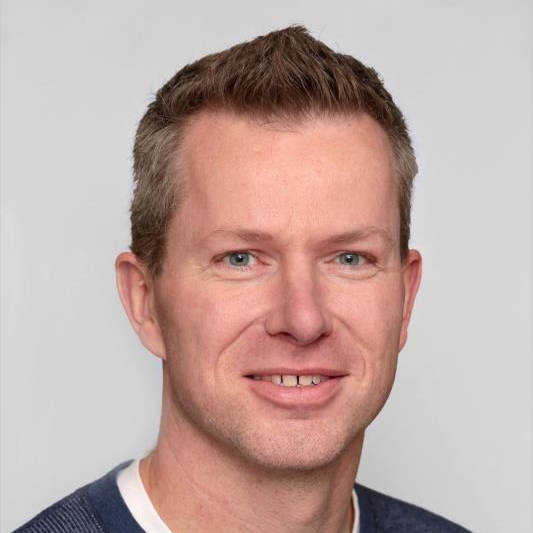 Alex Thissen / Xpirit
Alex Thissen / XpiritAlex has been developing software since the 90s, has served as lead developer and architect in both large enterprises and small companies. He is currently engaged in training developers in the details of working with the Microsoft platform and frameworks, teaching architects to design and build modern distributed applications on a cloud scale. He is a tenfold MVP in the category of Visual Studio and Development Technologies.
Natural Language Processing (NLP) in .NET
Text is the main source of information in the world, speech is the main way of interaction between people, which is also becoming a popular way of interacting with a computer. Applications such as search engines, chat bots, and personal assistants already use the knowledge gained from texts and speech. Can your application use this knowledge?
During the talk, we will discuss the NLP features available to us out of the box in the .NET framework, as well as those provided by cloud services such as Language Understanding Service (LUIS from Azure Cognitive Services) and IBM Watson. We will also look at the most popular NLP packages from NuGet (Stanford.NLP.NET, OpenNLP.NET, etc.)
 Sergey Tikhon / EPAM Systems
Sergey Tikhon / EPAM SystemsSolution architect in EPAM Systems, author of F # Weekly, Microsoft F # MVP, open source enthusiast, author of Stanford.NLP.NET, OpenNLP.NET, SwaggerProvider and some other fsprojects.
Difficulties transition to ASP.NET Core and Docker
Many developers, including us, have already tried ASP.NET Core, Docker, but very few people use it in production. In our project, we decided to try these technologies, because this bundle is cheaper to maintain and easier to deploy, and the speed of writing hardly changes.
The purpose of the report is to tell about the difficulties that we had to face when creating new applications on ASP.NET Core 1.1 and 2.0 under Docker, having experience developing on ASP.NET and not having any real experience with Docker.
In addition, to demonstrate ways to solve these problems and to show that the state and dynamics of the development of ASP.NET Core allow you to create ready-to-production applications.
Technologies used: ASP.NET Core 1.1 and 2.0, Docker, GitLab CI, Amazon EC2 Container Service.
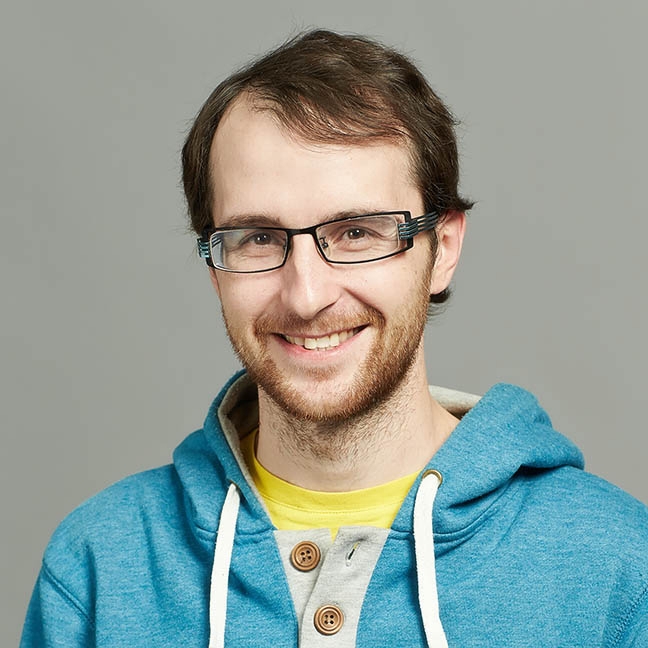 Alexander Ivanov / Arcadia
Alexander Ivanov / ArcadiaI came to .NET in 2008 from 1C, since then I have not rejoiced in the freedom to choose architectural solutions and try to try them in action. Currently interested in ASP.NET Core, Docker and related technologies, promoting them as far as possible.
Scratched metal
Micro-optimizations in the RavenDB vNext storage engine are critical for achieving 50K + write requests per second on an average server. In this report, we will look at the use of new intrinsics added in CoreCLR 2.1 in the context of real examples of bottlenecks on the critical execution path. Rather hardcore topics such as processor architecture and its influence on the behavior of caches (miss-hit ratio, poyoning), prefetching, etc. will be touched upon. The report is intended for engineers engaged in micro-optimizations in high-performance applications.
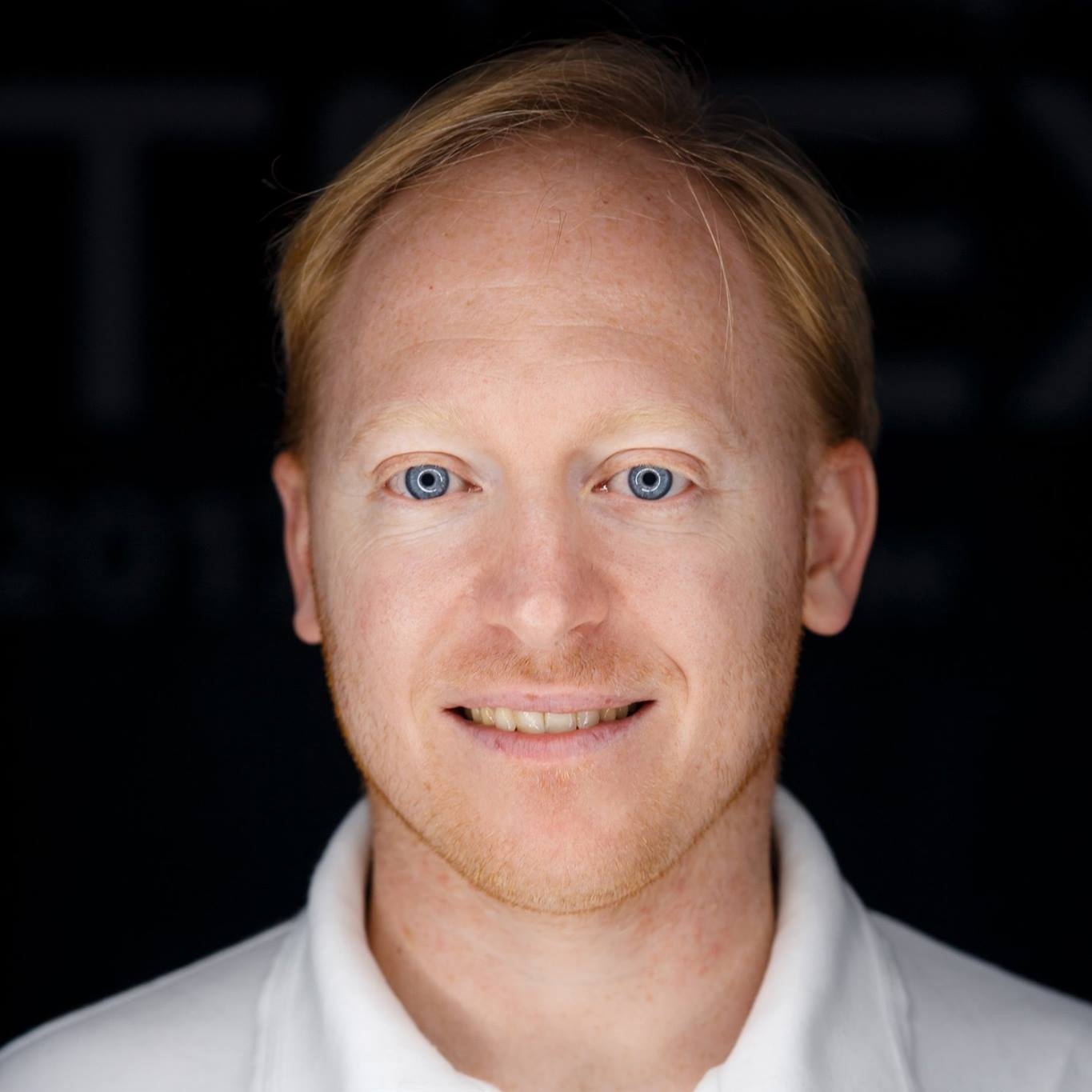 Federico Lois / Corvalius
Federico Lois / CorvaliusFederico is the co-founder of the R & D company Corvalius and the analytical company Coidealike. He has worked on the performance of algorithms over the past ten years, including both conventional processors and specialized hardware like GPUs. He has experience in various fields, ranging from the practice of improving the performance of banking applications, right up to the optimization of database engines.
Reactive Extensions (Rx) 101
Reactive applications are designed to handle asynchronous events so that it maximizes the responsiveness and elasticity of these applications. Reactive Extensions (Rx) is a library that abstracts the sources of events and provides tools for working with them in a reactive way.
Using Rx, filtering events, combining sources, transforming events, handling errors, etc., is much easier than using traditional tools and paradigms.
Reactive Extensions require a change in approach: you need to learn to think of the application as a message hub that knows how to respond to these messages. After the talk, you can better understand what Rx is, and get a starting point for the effective use of Rx in your application.
 Tamir Dresher / CodeValue
Tamir Dresher / CodeValueTamir Dresher - architect, consultant, instructor, head of the Cloud Division in CodeValue Israel. More than 10 years in the development and design of systems, both cloud and installed on the user's infrastructure. Winner of Microsoft MVP in the category of Visual Studio and Development Technologies, author of the book "Rx.NET in Action" of the publishing house Manning.
Special exceptions in .NET
When developing .NET applications, you may encounter exceptions whose behavior differs from all others. These exceptions occur when the operating system level and runtime errors occur unexpectedly and can lead to a crash of the whole process. For example, StackOverflowException, ThreadAbortException, AccessViolationException, OutOfMemoryException.
In the report, students will learn about the features of handling such exceptions, the internal mechanisms of the platform, the differences between versions and implementations of .NET, as well as low-level ways to change the standard runtime behavior.
 Evgeny Peshkov / Contour
Evgeny Peshkov / Contour.NET developer in SKB Kontur. The company is engaged in a common infrastructure: it develops a cloud-based application hosting platform. He is interested in the internal device of .NET and Windows and uses this knowledge in practice.
Building microservices with .NET Core and Docker
.NET Core is a “new” way to build .NET applications that works well with clouds and containers. In the report we will see how these technologies can be used to build applications based on containerized microservices. 20% of slides and 80% of code.
 Edwin van Wijk / Info Support
Edwin van Wijk / Info SupportEdwin has been working in IT since 1999, now he is a solution architect in Info Support. Microsoft MVP in the category of Visual Studio and Development Technologies.
Xamarin is not only harmful, but also useful
We are developing a mobile application for entrepreneurs in C # and Xamarin. Two years ago, using these tools was problematic: a broken IDE, performance issues, cross-platform code and a binding to native capabilities of platforms. Xamarin.Forms is generally one big problem. Now the situation has changed a lot for the better: AOT compilation is already in production, performance has improved significantly, problems with the binding and the environment have almost disappeared. Let us tell you how to use Xamarin now to simultaneously release releases of a complex application on iOS and Android.
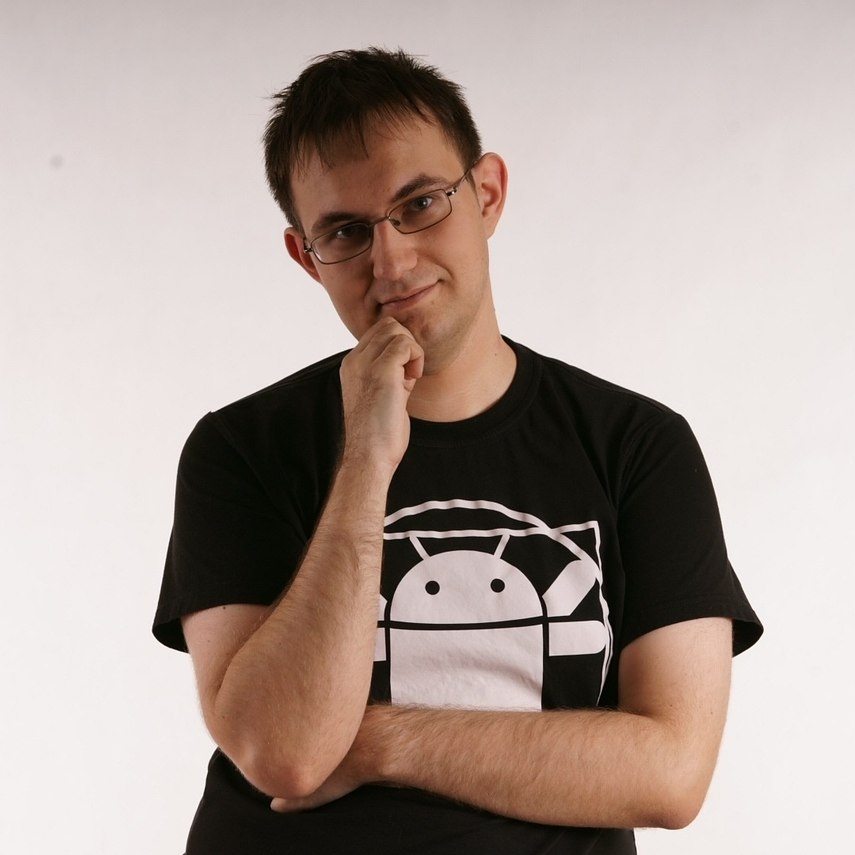 Dmitry Moiseev / Contour
Dmitry Moiseev / ContourDmitry has been professionally engaged in programming since 2009, in developing mobile applications in SKB Kontur - since 2013. I am sure that the future of application software development is in cross-platform solutions.
Perspective technologies of cosmonautics
What technologies in cosmonautics are developing right now, how they contribute to space exploration, and what we can expect from astronautics in the coming decade.
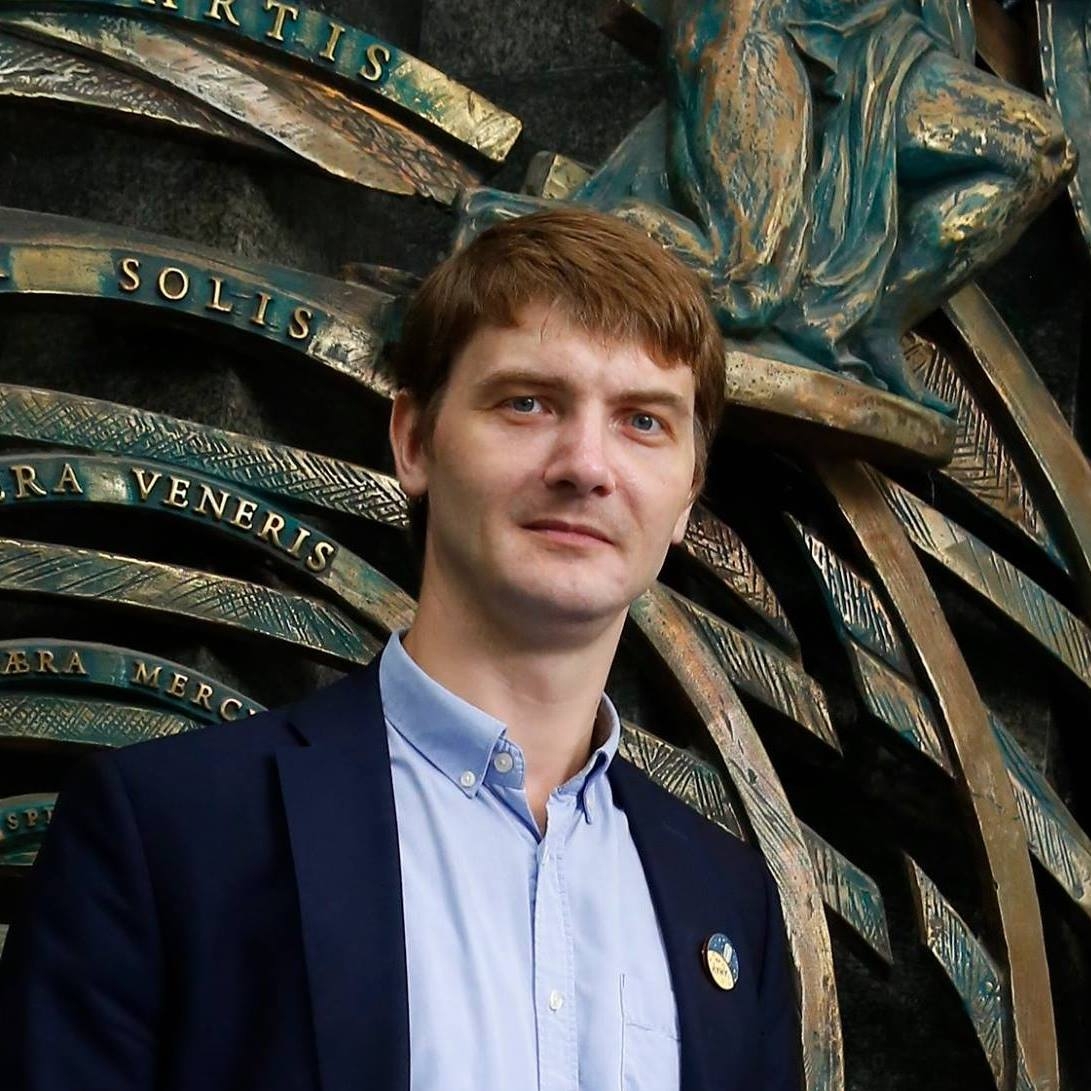 Vitaly Egorov / Cosmonautics Popularizer, Zelenyikot blogger
Vitaly Egorov / Cosmonautics Popularizer, Zelenyikot bloggerSpecialist in public relations of the Russian private space company Dauria Aerospace. Blogger Zelenyikot, popularizer of astronautics on the Internet, founder of the Open Space communities on social networks with a total number of over 1 million subscribers. In 2013, he was able to detect the landing module of the Soviet automatic interplanetary station Mars-3 on the surface of Mars. The initiator of the project of creation of the lunar microsatellite for shooting the Apollo and Lunokhod landing sites.
We remind you that this is the last opportunity to purchase tickets.
This can be done on the official conference website.
Source: https://habr.com/ru/post/353844/
All Articles